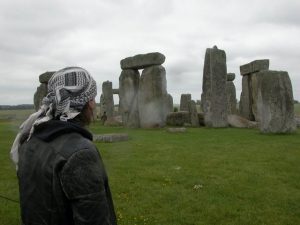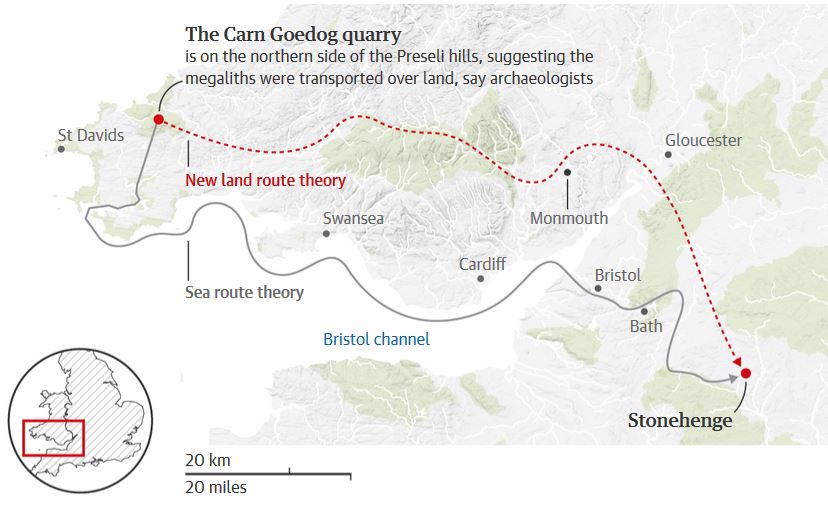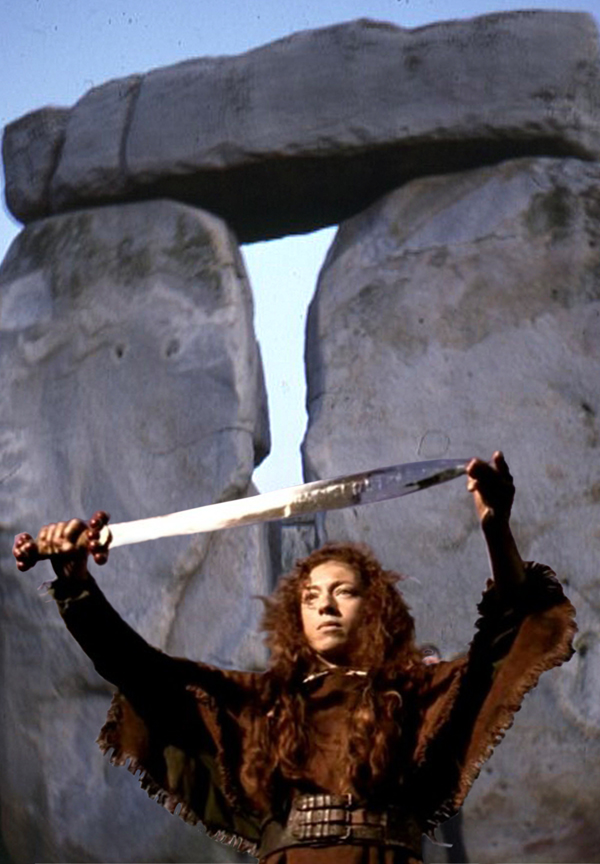
Boudicca wasn’t explicitly described as a queen in the accounts written by either Tacitus or Dio, but she is regarded as ancient British royalty by virtue of her marriage to Prasutagas, the one-time King of the Iceni. Dio says that she was of “a royal family”, while Tacitus says that she was someone descended from noble ancestry.
Cassius Dio wrote that, prior to Boudicca’s revolt against the Romans in AD 60, she released a hare from the folds of her dress, to allow her to foretell the future from the direction in which it fled; the hare ran away on the “right side”, a propitious omen that enraptured those tribes that were present. This omen caused Boudicca to give thanks to Andraste, the British goddess of Victory, and the prophecy turned out to be correct. Tacitus relates that the statue of the Roman goddess of Victory in Camulodunum (modern Colchester) toppled face-down after this, while numerous other harbingers of impending doom were seen and heard by the terrified Romans.
Of course, the sceptics will argue that Boudicca was ultimately defeated by the Romans at some location still unknown to us, thus invalidating the prophecy, and it is true that her army was eventually crushed somewhere in Britain by a Roman army led by Gaius Suetonius Paulinus.
However, it is equally true to say, as related above, that the Roman statue of Victory in Camulodunum fell down for no apparent reason, which would seem to me to be a very promising start for a prophecy involving a hare and Andraste, the British goddess of Victory. After that, Boudicca destroyed Camulodunum and killed the inhabitants, then she annihilated a Roman legion that had been sent to save the colony. As far as I’m aware, this was only the second Roman legion destroyed by the ancient Britons since the Claudian invasion in 43 AD, the first occasion being the destruction in 53 or 54 AD of a legion led by Manlius Valens somewhere in the West of England, at the hand of the mysterious Silures.
Boudicca and her confederation of tribes went on to destroy London, before turning back north to wipe Verulamium (present day St Albans) off the map. In the process of routing a Roman legion and destroying three cities, she’s said to have killed between 70,000 and 80,000 people, a crisis so severe that the emperor Nero seriously considered withdrawing Roman troops from this island. In recent times, some archaeologists believe that the city of Silchester was also razed to the ground by Boudicca, so, her eventual defeat aside, I would say that the prophecy involving the hare was pretty accurate, while Boadicea had every reason to thank Andraste.
I’ve discussed this matter at length with Dr Robin Melrose and he is of the opinion that Boudicca was first and foremost a prophetess, perhaps a Druidess, on account of her making the prophecy or divination by means of the hare. The German prophetess Veleda was a contemporary of Boudicca, while it seems that Veleda also played an active part in a revolt against Roman rule in Germany, at around the same time as Boadicea’s rebellion against Roman rule in Britain.
The historian Edmund Bolton was one of the first to speculate as to the origins of Stonehenge, and as Christopher Chippindale relates, he thought it had to be the tomb of Boudicca, purpose-built to house her remains or else to mark her final resting place. He seems to have done this on the basis that Boudicca’s name was notable and that she was also one of the few ancient Britons identified by name in the classical accounts. Regular readers of this site will be aware of my interest in folklore and mythology, but while Bolton’s theory doesn’t classify as an oral tradition or legend, it has nonetheless long made me wonder if there was any possibility that Stonehenge could indeed be Boudicca’s last resting place.
If we regard Boadicea simply as an Iron Age personage, we know that Iron Age pottery has been found at Stonehenge, while we also know of the existence of a huge Iron Age hillfort nearby, Vespasian’s Camp. I understand that this place flourished around the time of the visit made by Pytheas of Massilia to Britain in the fourth century BC, while recent excavations by the Open University team, led by David Jacques, found pottery showing that the hill fort was occupied close to the time of the Roman invasion.
As for Iron Age burials, we know of the grave of a male in the nearby Palisade, while I believe another was recorded at nearby Durrington Walls by the Stonehenge Riverside Project. At least one child’s burial was discovered just to the west of Stonehenge that dated to the first century BC and this was the grave that contained Stone Hengehog. There are almost certainly many more Iron Age burials awaiting discovery in the Stonehenge landscape, but the aforementioned child’s burial and the young man in the Palisade terminal demonstrate that Stonehenge itself was somehow significant to the people of this loosely-defined era.
The British Iron Age is deemed to have come to a close when the Romans (originally a Bronze Age civilisation) invaded Britain in 43 AD, after which the inhabitants are generally referred to as Romano-British, but again, there’s evidence in the form of Romano-British pottery at Stonehenge, in some of the Y holes, but probably elsewhere as well. As such, both ‘eras’ in which Boudicca existed are well attested in the physical evidence at Stonehenge.
As for the possibility that Boudicca was a Druidess, I’ve been writing about the links between the Druids and Stonehenge for years. The histories tell us that Boudicca started her insurrection in AD 60 or 61 after she was flogged and her young daughters raped, while this revolt started while the Romans were apparently trying to eradicate the Druids on Anglesey, as the Roman historian Tacitus memorably described:
“At that time, however, Paulinus Suetonius was in charge of Britain. In military science and people’s talk, which allows no one to be without envy, he rivalled Corbulo, and was anxious to equal the glorious recovery of Armenia by subduing enemies of the state. For this reason he prepared to attack the island of Mona [Anglesey] which had a large population and provided shelter for fugitives. Flat-bottomed boats were constructed to contend with the shallow water and shifting bottom, and in this way the infantry made the crossing. Then followed the cavalry, making use of fords or swimming beside their horses where the water was deeper.
“Along the shore stood the enemy in a close-packed array of armed men interspersed with women dressed like Furies in funeral black, with streaming hair and brandishing torches. Round about were the Druids, their hands raised to heaven, pouring out dire curses. The Roman troops were so struck with dismay at this weird sight that they became rooted to the spot as though their limbs were paralysed and laid themselves open to wounds. Then, bolstered by the encouragements of their commander and urging one another not to be afraid of this mass of fanatical women, they advanced with their standards, cut down all they met, and enveloped them in the flames of their own torches. After this a garrison was imposed on the conquered natives, and the groves devoted to their savage rites cut down; for it was part of their religion to drench their altars with the blood of captives and to consult their gods by means of human entrails.”
Tacitus Annals XIV, 29-30
Boudicca clearly had every reason to raise a revolt against the occupying Romans, so it is perhaps purely coincidental that her uprising should have happened at precisely the same time that the Romans were trying to crush the Druids in what many people assume was their heartland. In any event, her actions clearly brought the Druids and other inhabitants of Mona some breathing space, because Suetonius Paulinus had to withdraw his troops from the island in an attempt to counter the terrible threat from the East.
As a member of British royalty of the time, there can be no doubt that Boudicca was intimately acquainted with the Druids, so it may be that her revolt, in addition to gaining revenge for the terrible ill-treatment that she and her daughters had suffered, was intended to aid the Druids on Anglesey, although there is no overt suggestion of this in the later accounts of either Tacitus or Dio.
However, there may be more to this matter and I don’t believe anyone has examined it in this way before. In his Annals, Tacitus gives us the famous description of the sight facing the Roman legions as they prepared to invade Anglesey: “On the shore stood the opposing army with its dense array of armed warriors, while between the ranks dashed women, in black attire like the Furies, with hair dishevelled, waving brands. All around, the Druids, lifting up their hands to heaven, and pouring forth dreadful imprecations, scared our soldiers by the unfamiliar sight, so that, as if their limbs were paralysed, they stood motionless, and exposed to wounds. Then urged by their general’s appeals and mutual encouragements not to quail before a troop of frenzied women, they bore the standards onwards….”

We can’t be sure if the Druids and the women Tacitus describes were separate groups, but the wording suggests to me that the women were indeed Druids. They were described as dashing between the ranks, while the Druids were described as pouring forth dreadful imprecations, but the generals’ appeals and encouragements to their troops were “not to quail before a troop of frenzied women”. So, either the mere sight of the black-clad women was more terrifying to the Roman soldiers than hearing the dreadful imprecations of the Druids, which seems unlikely, or else the women and Druids were all of one troop. What has any of this to do with Boudicca?
Well, it seems clear that Boudicca was a prophetess and perhaps a Druid herself, and we have the apparent coincidence of her uprising taking place at a time that interrupted the Roman troops as they attempted to destroy the Druids that existed on Anglesey. Tacitus mentions that the hair of the women on Anglesey was dishevelled, while Dio tells us that Boadicea’s hair was a tawny colour and it was so long that it hung below her waist. In addition to this, he speaks of Boudicca as possessing a harsh voice and a piercing glare, all of which sounds very similar to the ‘female Druids’ of Anglesey.
The parallels don’t end there, because Tacitus describes these female Druids of Anglesey as being like the Furies, the “female chthonic deities of vengeance, or supernatural personifications of the anger of the dead.” These women inspired such dread in the Roman legions that the soldiers were rooted to the spot, while Boudicca had an identical effect upon the Second Legion based in Exeter under Poenius Postumus, because they refused to march north to join Suetonius in his attempt to quell the uprising.
When Dio describes Boadicea addressing her own people, he writes that “She now grasped a spear to aid her in terrifying all beholders“, and he later has Boudicca elaborating on this singular theme of inspiring terror in those who would cross water to attack the Britons and presumably, the Druids:
“But, to speak the plain truth, it is we who have made ourselves responsible for all these evils, in that we allowed them to set foot on the island in the first place instead of expelling them at once as we did their famous Julius Caesar, – yes, and in that we did not deal with them while they were still far away as we dealt with Augustus and with Gaius Caligula and make even the attempt to sail hither a formidable thing.” All things considered, Boudicca sounds virtually inseparable from the women Druids of Anglesey, but even that is not entirely the end of the matter.
Tacitus likened the women on Anglesey who opposed the Roman legions to the Furies, or deities of vengeance, while the idea of retribution is something he mentions more than once in his account of Boadicea’s simultaneous revolt. He states that “About 70,000 citizens and allies, it appeared, fell in the places which I have mentioned. For it was not on making prisoners and selling them, or on any of the barter of war, that the enemy was bent, but on slaughter, on the gibbet, the fire and the cross, like men soon about to pay the penalty, and meanwhile snatching at instant vengeance.”
He also has Boudicca – not unnaturally – speaking of vengeance: “But now,” she said, “it is not as a woman descended from noble ancestry, but as one of the people that I am avenging lost freedom…”
It seems that the (male?) Druids on Anglesey were the ones uttering dire imprecations and terrifying the Roman soldiers, but Tacitus also speaks of unspecified women when he describes the imminent destruction of Camulodumun, in an echo of Boudicca’s prediction and what Dio describes as her harsh voice: “Women excited to frenzy prophesied impending destruction; ravings in a strange tongue, it was said, were heard in their Senate-house.”
This theme of terrifying vocalisations is repeated elsewhere in the account of Tacitus, because as far as noise and uproar at least are concerned, the impending confrontation between the forces of Boudicca and Suetonius sounds almost identical to the confrontation on Anglesey, while women are again prominent:
“Nor was Suetonius silent at such a crisis. Though he confided in the valour of his men, he yet mingled encouragements and entreaties to disdain the clamours and empty threats of the barbarians. “There,” he said, “you see more women than warriors.” At the end of the battle in which Boudicca was defeated, he notes “Our soldiers spared not to slay even the women…”, something that may have reflected the prominent role that women took in this confrontation, just as their sisters on Angelsey had done.
It interests me too that Tacitus should have compared the ‘Druidesses’ on Anglesey to the avenging Furies, who were chthonic deities, because Pomponius Mela stated that the Druids believed that “there is another life in the infernal regions”. The Latin words for “the infernal regions” are “ad Manes”, so if we proceed on the assumption that Roman authors were trying to be as accurate as possible in their descriptions, by equating foreign customs with the most similar of their own, we learn that the Manes, or spirits of the dead, were offered blood sacrifices, which sounds highly reminiscent of the ‘crimes’ the Druids were accused of. Furthermore, there was a sacred stone called the Lapis Manalis that covered an entrance to the underworld, while one of the Furies, Tisiphone, was said to be a fearsome guardian of the Gates of Tartarus.
It may just be that I’ve read too much into all this, but then again, there’s the near certainty that I’ve not explored it enough, because I’m fascinated by the fact that one of the Furies was a doorkeeper or gatekeeper to Hell, while there’s also Dio’s statement that Andraste was worshipped in a grove. Nonetheless, it seems clear to me that Boudicca was intimately connected with prophecy, the Druids and by immediate extension, a fervent belief in an afterlife that persisted in some kind of Underworld.
On balance, I think that Boudicca the Druidess or prophetess would have been drawn to Stonehenge after her apocalyptic battle with Suetonius. There is a suggestion in Dio’s account that she hoped to fight again, when we read that after the battle “Nevertheless, not a few made their escape and were preparing to fight again. In the meantime, however, Buduica fell sick and died.” If she hoped to gain divine inspiration or to make another prophecy, then everything I’ve read about Stonehenge as a place of divination suggests that this would have been the place to go to.
I’ve written numerous posts on Eternal Idol dealing with the idea of Stonehenge as a place of prophecy, but I’m far from being alone in this. The late Gerald Hawkins wrote of astrological studies being conducted in this place, while in more recent times, other archaeologists have tentatively speculated about the worship of a god at Stonehenge who was the equivalent of Apollo, and one of Apollo’s main attributes was as a god of divination. If, as seems to be the case, Stonehenge was one of the foremost centres of divination in Britain – and the excavation by Professors Darvill and Wainwright produced evidence that it was in active use up until the 17th century – and if Boudicca was a prominent prophetess, as all the evidence suggests, then there’s an inescapable connection here.
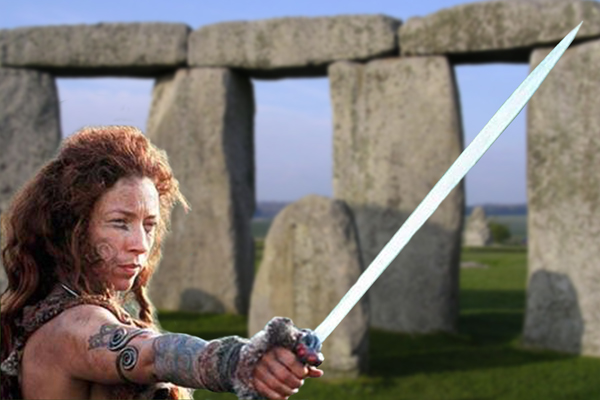
If, however, she was either planning her own death – something I’ll deal with shortly – or else she was ill and felt that she would soon die, it’s hard to think of a better place to be “Ad Manes” than at an imposing and already incredibly ancient place of the dead, surrounded by a vast cemetery, where many Iron Age people had already been interred, which had long had a huge Iron Age settlement nearby in the form of Vespasian’s Camp.
Nonetheless, there are many other factors to consider. In her speech, as reported or invented by Dio, Boudicca states that “if we ever choose to retreat anywhere, we conceal ourselves in swamps and mountains so inaccessible that we can be neither discovered or taken.” Her homeland in present day East Anglia contained extensive fenland, so it’s possible that she retreated there.
As for mountains, then north Wales and Anglesey, the supposed Druid heartland, would seem to be out of the question. Dio writes “Now it chanced that Paulinus had already brought Mona (Anglesey) to terms, and so on learning of the disaster in Britain (Boudicca’s uprising) he at once set sail thither from Mona.” Tacitus, however, implies that the Roman general in charge had to suspend his operation to subdue the Druids, writing “Suetonius while thus occupied received tidings of the sudden revolt of the province.” Either way, the now-victorious Romans had come from Anglesey, so it seems unlikely that Boudicca would have headed in that direction.
Tacitus describes Cartimandua as a fiercely pro-Roman British queen, who was already known for having betrayed Caratacus, so I think it unlikely that Boudicca would have headed north into Cartimandua’s domain. The realm of the Silures in south Wales would have provided a perfect retreat, however, with the added bonus that the warlike inhabitants had recently aided Caratacus in his fight against the Romans, and they were not to be subdued for over 20 years.
As well as her links with the Druids and with prophecy, what of Boudicca the ‘queen’, or the woman of noble ancestry? We know that Boudicca was of the Iceni tribe, we know that Caesar may well have graced them with the title of “The Great Iceni” almost a century before, we know that Boudicca’s husband, King Prasutagas, was a prosperous man and we also know that Boudicca was eminent enough to lead a confederation of tribes into battle.
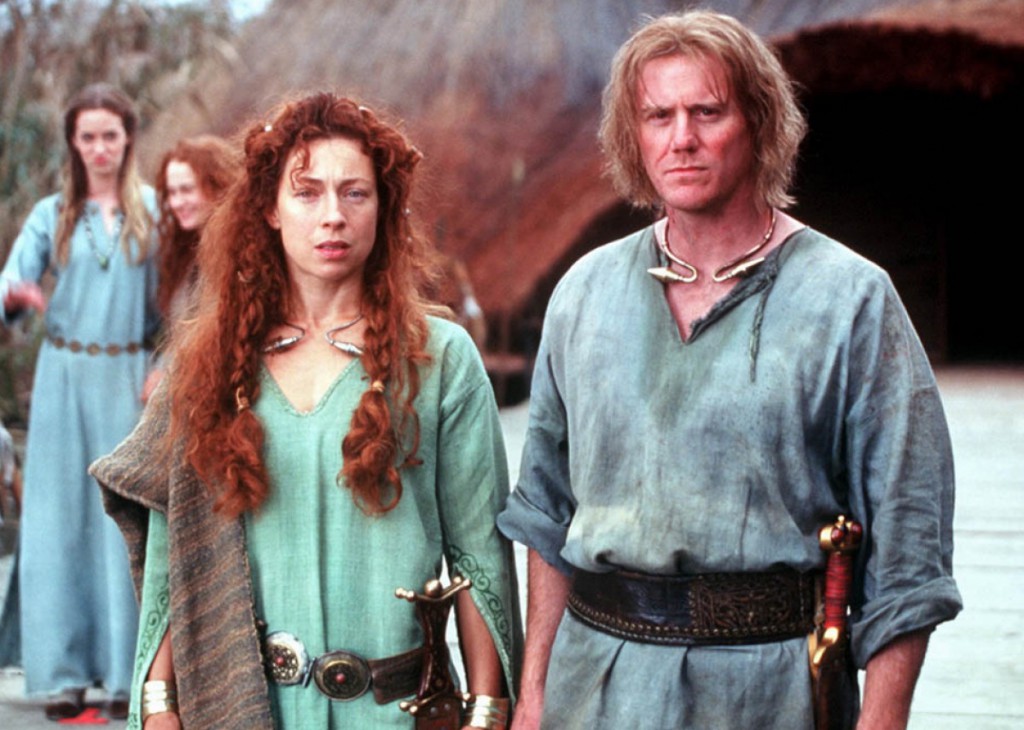
Can we hazard an informed guess as to where such a revered person may have been drawn after the defeat of her army at the hands of an invader?
Geoffrey of Monmouth described the building of Stonehenge in great detail in his book The History of the Kings of Britain; I’ve been through this many times before, so I’ll just make my point once more, as briefly as possible. Geoffrey’s account of the building of Stonehenge is fantastically accurate, considering the age in which he was writing and also considering that he’s long been regarded as a liar and a fantasist. In particular, his account of Stonehenge being constructed as a monument to dead nobles seems to be exactly right, which is astonishing when we consider that Stonehenge was used a cremation cemetery for ‘special people’ in or around 3,200 BC.
How Geoffrey could have known all this (and more) over 4,000 years later would appear to be a complete mystery, but he tells us that he acquired his information from his friend Walter, the Archdeacon of Oxford, who gave him “a very ancient book in the British tongue”. The first people that we know of to have used writing and to have possessed such an extensive oral tradition that it took as many as 20 years to memorise were the Druids, so it stands to reason that the information about the very earliest days of Stonehenge must have come via these ‘Iron Age’ people, and then somehow into Walter’s book. Druidess or not, would Boudicca have learned of this tradition of ancient nobles being buried at Stonehenge? On balance, I would say yes, while if she were a Druidess, as the evidence suggests, then it’s an inevitability.
Other than the nobles at Stonehenge, who were slain by treacherous invaders, a detail that may or may not have been present in the Druid tradition, we know of other kings there. The aforementioned nobles have been described as prehistoric royalty by Professor Mike Parker Pearson, but the title of the King of Stonehenge has been extended to the Amesbury Archer, who travelled from a great deal further afield than the realm of the Iceni to earn that accolade. The Bush Barrow warrior has also been described as a King of Stonehenge, with good reason, while Aubrey Burl refers to other such prehistoric royalty in his book The Stonehenge People.
The huge burial mounds to the east of Stonehenge acquired the name of the King Barrows in recent times, for obvious reasons, while it’s self-evident that our ancestors would have regarded some of their own kind as royalty, as we understand the term today. Would the people of Boudicca’s time have thought of Stonehenge and the surrounding cemeteries as a place of kings and queens, when they themselves thought in terms of such titles? I would say yes, while there’s the additional matter of the fourth century BC Boreades, or kings of the city of Apollo, a place I’m certain was the nearby Vespasian’s Camp, something else I’ve written about at great length before now on Eternal Idol.
Bernard Cornwell described a visit by King Arthur to Stonehenge in his Warlord trilogy, an event that almost certainly occurred, given the notable presence of this Dark Ages warlord or ‘dux bellorum’ in the West Country. Geoffrey of Monmouth stated that Aurelius Ambrosius and King Constantine III were buried there, so he may have acquired information or ideas about dead kings at Stonehenge from his friend Walter’s ancient book. If ever there were a place that abounded in legends of dead kings and queens in late Iron Age Britain, then it was surely Stonehenge, so we must ask ourselves if Boudicca would have been drawn towards such a site, as she contemplated defeat and the end of her earthly existence.
As a place of sanctuary, it later attracted the notice of Thomas Hardy, who placed Tess of the D’Urbevilles there on her last night of freedom. Dennis Wheatley wrote about a similar scenario in his occult novel The Devil Rides Out, where Simon Aron is taken to Stonehenge to escape the power of Mocata, a black magician. Almost exactly sixteen hundred years after Boudicca’s revolt, a historical king – as opposed to a fictional character – found himself in an almost identical position to Boudicca.
King Charles II was defeated by Cromwell in the final battle of the English Civil Wars at Worcester on September 3rd 1651, thereby losing an army and a kingdom, after which he made his way south and visited Stonehenge in the company of his protector, Colonel Robert Phillips. These ‘future echoes’ are intriguing, but is there any evidence at all that Iron Age Britons venerated their ancient ancestors and looked to them in time of war?
As reported by The Guardian, the BBC and elsewhere, an Iron Age chariot burial was discovered some years ago during upgrades to the A1 motorway. Burials of this type are extremely rare, but what made this discovery even more fascinating was the fact that the man buried with the chariot had died in around 400 BC, yet he had been commemorated with a huge feast around 500 years after his death by hordes who had visited his grave. Angela Boyle of Oxford Archaeology was quoted as saying “The evidence suggests that the site of the burial may have been venerated for all those years after his death – and then became a place for the tribes to rally and perhaps remember a great national leader of the past.”
The BBC reported that the feast, attended by thousands of people, took place as the Romans were exerting their authority in the country. Angela Boyle’s opinion was that “This could be seen as a reassertion of native identity or a plea to ancestors to help them out in difficult times (my emphases)….I would suggest that what we are actually seeing here is a re-emphasis of the importance of that area to the native population of the country, as the Romans were moving into the area.”
So, if thousands of Britons could visit the tomb of a long-dead hero as “a plea to the ancestors” when the Romans were tightening their grip on the land, I ask myself how likely it would be that a woman such as Boudicca would do something almost identical, by travelling to Stonehenge in the aftermath of a fearsome defeat at the hands of a Roman invader?
Tacitus tells us that she poisoned herself, whereas Dio says that she fell sick and died. I’m inclined to accept the version put forward by Tacitus on account of other information given by Dio, that Boudicca was “possessed of greater intelligence than often belongs to women.” She may possibly have heard of Hannibal, who was said to have taken poison to escape the clutches of the Romans roughly 240 years earlier, and she may also have heard of Cleopatra, the last pharaoh of Egypt, who killed herself with an asp bite after defeat by opposing Roman forces under Octavian in 30 BC.
Whether or not she was aware of these people and the fates they suffered, I would say that suicide and an unknown burial place effectively ensured Boudicca’s lasting victory. I would say that given her intelligence and her familiarity with Roman culture, she was more than capable of acting upon an idea that would frustrate and infuriate a hated invader, who would have dearly loved to have taken her to Rome for humiliation, torture and execution.
If Boudicca hadn’t heard of either Hannibal or Cleopatra, then she would certainly have been aware of Caratacus, the leader of the resistance against the Romans in Britain during her time. Less than ten years before Boudicca’s uprising, Caratacus had been betrayed by Queen Cartimandua and taken to Rome to be paraded in a triumphal procession. The usual fate for such barbarian warlords was to be executed in public afterwards, but Caratacus managed to secure clemency from the emperor Claudius after delivering a memorable speech in the Roman senate. All things considered, Boudicca was extremely unlikely to have won a reprieve from Nero, of all people, and she doubtless knew that her ordeal of being flogged and watching her daughters being raped a year or so before would be as nothing compared to the appalling fate that awaited her in Rome as a female captive barbarian ‘dux bellorum’.
She had instigated and led one of the worst revolts in Rome’s history, razing 3 cities and quite possibly 4, destroying an entire legion and killing around 80,000 people. She had temporarily distracted the Romans from destroying Anglesey and its Druids, and she had fought a pitched battle with the legions of Suetonius; although she had lost that particular encounter, she could be confident that many Romans had died in the engagement.
As well as having come of worst in this battle, Boadicea had recently lost her beloved husband Prasatugas, while she had also been flogged and had seen her daughters raped by Roman legionaries. My guess is that after the bloody uprising and the final battle in which she was defeated, a woman such as Boadicea would still have seen herself marginally ahead at this point, so what better way to ensure Andraste’s prophesied victory, to deny the Romans a triumphal procession, than by taking her own life and ensuring that the site of her grave forever remained a secret from the Romans?
Later leaders such as King Arthur and Owain Glyndwr vanished into the hills and into folklore at the conclusion of their military campaigns, so Boadicea may have consciously made the decision to kill herself and to disappear for the sole purpose of thwarting the Romans, while she may have been aware of stories of former leaders in her land acquiring legendary status in a similar way.
Some of these stories may have involved ancient kings or nobles buried at what we now know as Stonehenge, so I am inclined to think the baleful monument would have been the destination of choice for Boudicca and her small, loyal retinue, for all the reasons I’ve supplied above. Of course, just about anything is possible, but I think it’s probable that Boudicca ended her days in the immediate vicinity of Stonehenge and was buried there or thereabouts.
Given that there’s no evidence to the contrary, I choose to fervently believe that this courageous, astonishing woman’s last resting place is somewhere in the Stonehenge landscape. I’ve read at length over the decades about Boudicca and I’ve yet to come across the merest scrap of evidence from anyone as to where her grave lies, other than “somewhere in Britain”. With this in mind, I consider that all the arguments and evidence I’ve presented here constitute the strongest case for her last resting place that anyone has ever come up with, be that person an archaeologist, historian, neopagan or relevant other.
At this point, I must draw to a close, reluctant though I am to do so. A previous version of this post, published here some years ago, explored some other tangential aspects of Boudicca, Stonehenge and the Romans, so while I was pleased with it all, I suspect that these other fascinating matters would be best presented as a separate post. In the meantime, I hope that it’s unmistakably clear that my admiration for Boudicca knows no bounds.
REGIONS CAESAR NEVER KNEW, THY POSTERITY SHALL SWAY
From Boadicea, an ode, 1782, by William Cowper.
My warmest thanks to the actress Alex Kingston for her wonderful portrayal of Boudicca.
